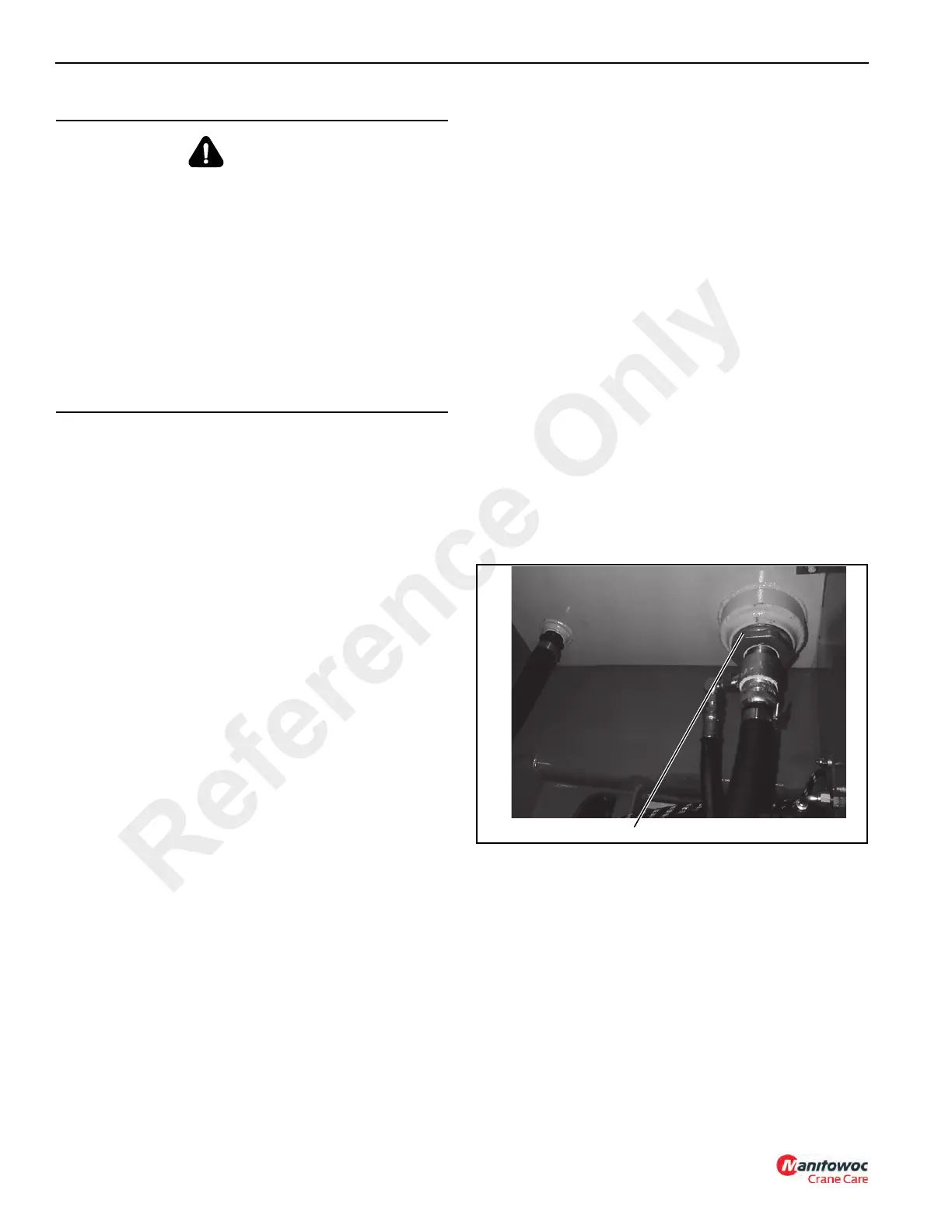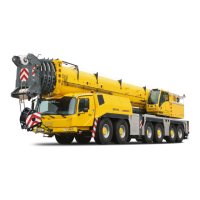MAINTENANCE CD3340B/YB4411
5-34
Published 04/07/2015 Control # 569-00
Lubricate the Rear Axle Bearings
The rear axle wheel bearings should be lubricated with
grease. The hubs have to be removed to gain access to the
wheel bearings.
Replace the Hydraulic Oil
NOTE: ISO (international Standards Organization) #46/68
Hydraulic Oil (Mobil Fluid #424) is recommended
for year-round use in the hydraulic system.
In very cold temperatures, SAE 5W or SAE 5W-20
oils can be used if the viscosity of the oil will not be
less than 60 SUS (Saybolt Universal Seconds) at
maximum operating temperature. It may be
necessary to use a pre-heater and a longer than
normal warming period at low operating speed to
heat the oil to operating temperature.
NOTE: The pump used on this crane requires clean
hydraulic oil for proper operation. Contaminated
oil can cause damage to the pump and other
components. Before adding any hydraulic oil to
the hydraulic system, be sure the oil has been
filtered through a 10-micron (absolute), or less,
filter.
To change the hydraulic oil:
1. Fully retract and lower the booms.
2. Retract all outriggers.
3. Operate the hydraulic system until the hydraulic oil is
warm.
NOTE: It is necessary to climb under the crane to drain the
hydraulic oil. Be sure engine is shut off, the ignition
key is removed and chock blocks are in place
before climbing under the crane.
4. Level the crane, engage the parking brake, shut off the
engine and remove the ignition key.
5. Place a suitable container under the hydraulic pump,
located in front of the engine.
6. Loosen the suction hose clamp at the hydraulic pump.
Remove the hose and let the oil drain from the hydraulic
tank drain into the container. DO NOT remove the
suction hose from the pump.
7. When the tank is drained, connect the suction line to the
pump. Tighten the clamp. Be sure the suction hose is
tight and the clamp on the pump suction hose is tight.
8. Remove the wheel and tire under the hydraulic tank. It
will make it much easier to reach under the hydraulic
tank if the wheel and tire are removed. Block the frame.
9. Disconnect all hoses from hydraulic tank (Figure 5-75).
Secure the main pump suction line so that the hydraulic
oil in the hose will not drain out.
NOTE: DO NOT lower the pump suction line lower than the
pump. The pump requires that it be full of oil at
start-up. Lowering the hose lower than the pump
will drain the oil from the pump and cause damage
to the pump when it is started.
10. Remove the suction strainer from the hydraulic tank and
clean it in a suitable solvent.
11. Remove the fill strainer from the fill tube and clean it in a
suitable solvent.
12. Clean the inside of the hydraulic tank and remove any
sediment.
13. Install the fill strainer, suction strainer, suction hoses and
return hose to the hydraulic tank.
14. Replace the hydraulic oil filter. See “Replacing the
Hydraulic Oil Filter” below.
15. Install the wheel and tire assembly. Tighten the wheel
nuts to 405 Nm (300 lb-ft).
DANGER
Failure to use the proper type and viscosity of planetary
gear oil may contribute to intermittent brake clutch
slippage which could result in property damage, severe
personal injury or death. Some gear lubricants contain
large amounts of EP (extreme pressure) and anti-friction
additives which may contribute to brake clutch slippage
and damage to brake friction discs and seals. Oil viscosity
with regard to ambient temperature is also critical to
reliable brake clutch operation. Tests have indicated that
excessively heavy or thick gear oil may contribute to
intermittent brake clutch slippage. Make certain that the
gear oil viscosity in the hoist is correct for prevailing
ambient temperature.
p0446
FIGURE 5-75
Suction Strainer
Reference Only
